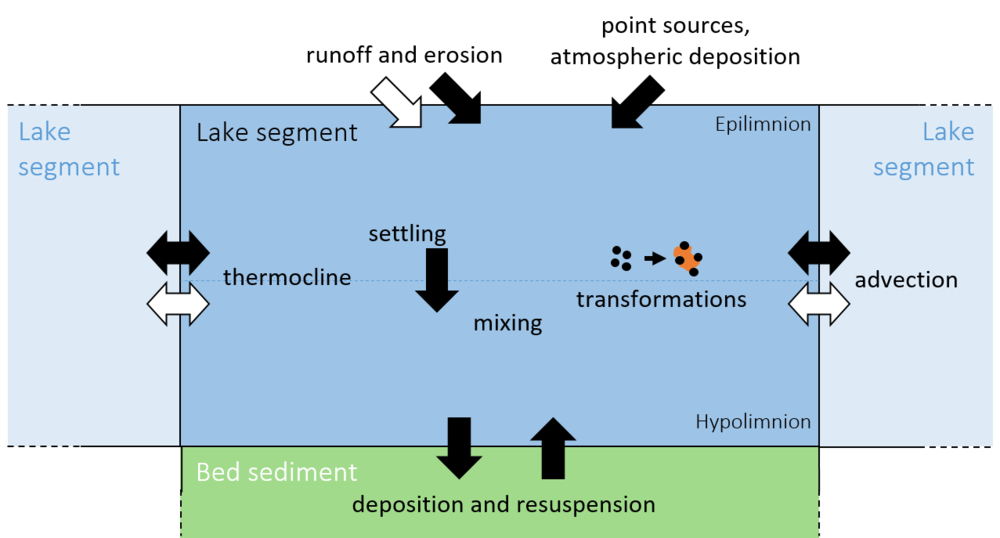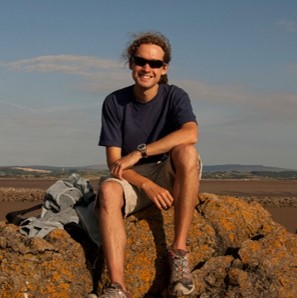Lake and reservoir model
Within the gridded NanoFASE water-soil organism model, lakes and reservoirs are represented as "lake segments", which are contained within grid cells and thus have a maximum size corresponding to the grid cell’s area. Lakes or reservoirs that span over multiple grid cells are thus split into multiple lake segments. Each lake segment has a bed sediment.

Conceptual model of lake segments and their bed sediments within the NanoFASE water-soil-organism model
In the NanoFASE model, lakes have the ability to stratify thermally into two layers, the epilimnion and hypolimnion, and this stratification is calculated based on meteorological data such as wind speed and solar radiation.
A number of processes transfer water, sediment and/or nanomaterials to/from each lake segment:
- Advection transfers water, suspended particulate matter (SPM) and nanomaterials to/from neighbouring lake segments.
- Surface runoff provides water to the segment, and also causes soil erosion, which deposits sediment and nanomaterials to the segment.
- Point sources and atmospheric deposition transfer nanomaterials to the segment.
- Sediment deposition and resuspension transfers SPM and heteroaggregated nanomaterials to/from the bed sediment. Settling also transfers SPM and heteroaggregated nanomaterials from the epilimnion to the hypolimnion.
- Mixing transfers water and associated SPM/nanomaterials between the epilimnion and hypolimnion.
Nanomaterials within each reach can undergo certain transformations, which change their form or state:
- Heteroaggregation to SPM
- Dissolution
- Chemical alteration, e.g. sulfidation, oxidation
This list of transformations is not exhaustive and the NanoFASE soil–water model provides sufficient flexibility to easily add extra transformation processes. Similarly, the model’s flexibility enables the user to select only those processes relevant to the nanomaterial being modelled.
Reservoirs
The notable difference between reservoirs and lakes is that the outflow to reservoirs is controlled by a dam and spillway. In the NanoFASE soil–water model, two types of spillway (as well as a combination of both) are modelled:
- Uncontrolled spillway: No control is placed on how fast the spillway removes water, and thus we assume that any water above the level of the spillway is instantaneously removed (i.e., the reservoir is kept at a maximum depth corresponding to the level of the spillway).
- Controlled spillway: The flow through the spillway is regulated, by gates for example. The outflow at any given time is dependent on the operating rules of the reservoir.
Read more |
Read also |
|
Visit the NanoFASE Library to read summaries of these reports: |
Hipsey, M. R., Bruce, L. C., & Hamilton, D. P. (2014). GLM - General Lake Model: Model Overview and User Information: AED Report #26, The University of Western Australia, Perth, Australia
|
Contact
 Sam Harrison
Sam Harrison
Centre for Ecology and Hydrology (CEH), UK
